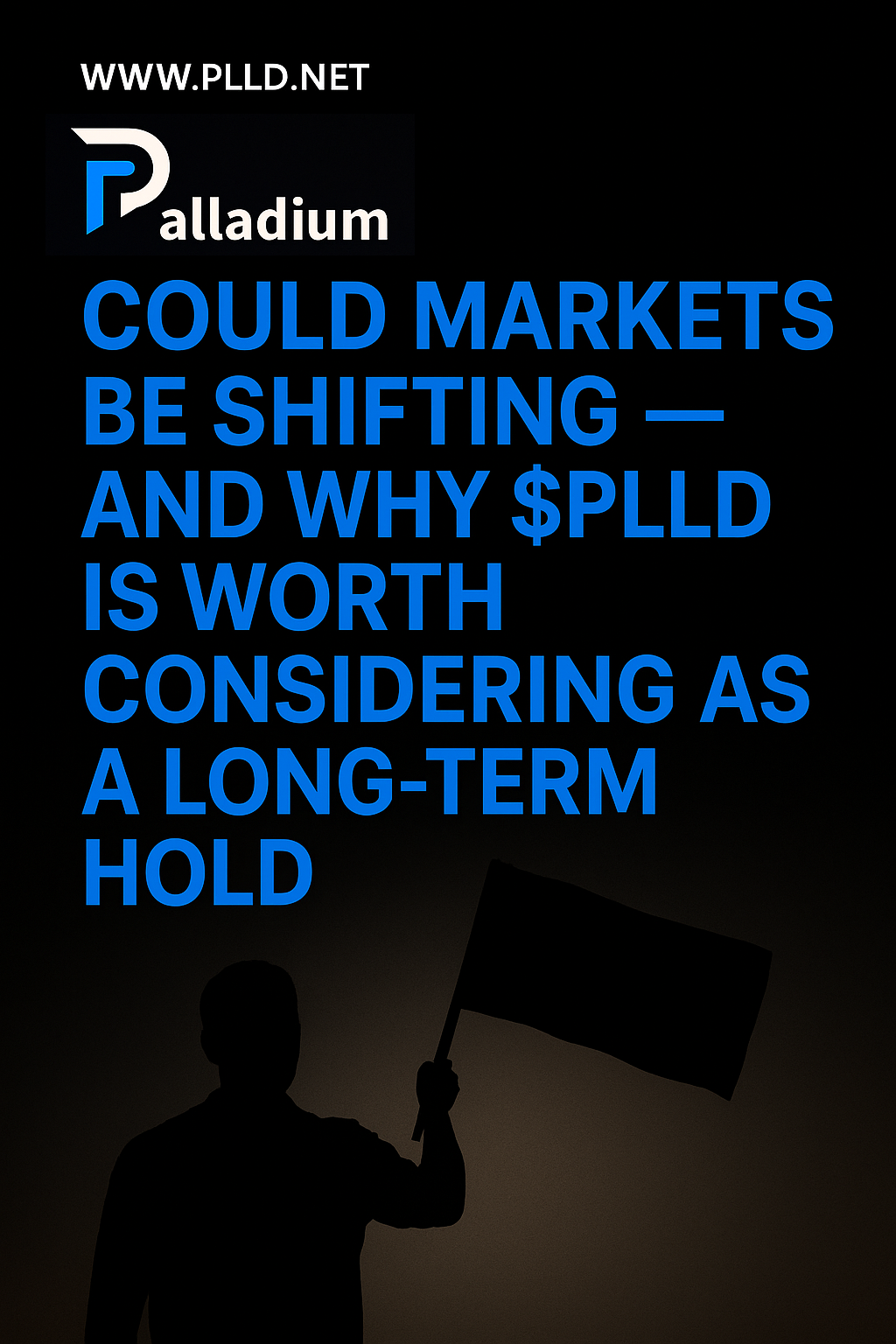Big picture: where markets appear to be shifting
Several structural themes are gaining traction in crypto and broader financial markets right now:
- Demand for tokenized real-world assets (RWA) — institutional and retail capital are exploring tokens that represent fractional ownership of income-generating assets (real estate, royalties, etc.), because they offer both yield and a reference to tangible value.
- Preference for on-chain utility, not pure speculation — projects that combine real utility (staking, revenue sharing, buybacks) with token governance tend to keep more long-term holder interest.
- Liquidity matters more than ever — listed tokens on reputable centralized exchanges attract broader participants and enable easier entry/exit, which reduces permanent illiquidity risk.
These shifts favour projects that combine real-world cashflows (real estate), on-chain mechanisms (staking/buybacks), and accessibility (exchange listings).
What Palladium (PLLD) actually offers — facts from the project
Key, verifiable project elements:
- Roadmap & utilities: Palladium positions PLLD as the native token for an ecosystem that includes an automated arbitrage trading engine, a swap interface (Palladium Swap), staking, and tokenized real estate (fractional NFTs). The team’s roadmap lays out token launch → scaling automated trading → release of swap/staking and real-estate NFT systems.
- Buyback mechanism & tokenomics: The whitepaper/litepaper describes a buyback mechanism that uses a share of automated trading profits to repurchase PLLD on the open market — a mechanism designed to reduce circulating supply pressure over time.
- Exchange listings (liquidity & reach): PLLD has been listed on notable exchanges: Poloniex listed PLLD for trading (deposit/trade/withdraw timeline in August 2025), and Tapbit announced a PLLD/USDT listing in October 2025 — both moves that materially improve accessibility and trading volume potential.
- Trading/arbitrage claims: The project promotes a continuously running arbitrage engine that monitors multiple exchanges to capture spreads; some third-party writeups and the project summaries highlight historical performance claims from the team (always verify independently).
Investment thesis: why PLLD could be a good hold for the future
- Tangible utility + yield orientation reduces pure speculation risk.
PLLD is designed to be used for staking, to access revenue from an automated trading engine, and to participate in tokenized real estate. Tokens that provide ongoing utility and share revenue streams can be more resilient during market rotations away from purely speculative memes. - Buyback mechanism can provide downward-supply pressure over time.
If the automated trading engine is profitable and the team consistently applies buybacks, that creates a demand sink that can support price over the medium term. (Effectiveness depends on actual trading performance and transparency.) - Exchange listings materially improve liquidity and discovery.
Being tradable on Poloniex (Aug 20, 2025) and added to Tapbit (Oct 24, 2025) increases global access and may attract institutional/retail flows that were previously excluded. New listings also increase the chance of market-making and deeper order books. - Market timing: rotating into utility/RWA assets.
If broader capital rotates toward tokens with real-world asset backing and verifiable revenue models, projects like Palladium are well positioned — because they explicitly combine on-chain mechanisms and real estate tokenization.
Major risks
Don’t ignore these — they are decisive:
- Operational execution risk. Roadmaps are plans, not guarantees. Automated trading engines, real-estate acquisition, and tokenization require strong ops, legal compliance (real estate is jurisdictionally heavy), and engineering. If execution falters, token utility and revenues may not materialize.
- Transparency & auditability. Claims of historical trading returns or buyback effectiveness must be independently auditable. Verify on-chain flows, published audits, and third-party attestations.
- Regulatory & legal risk for RWA. Tokenized real estate involves securities and property law; evolving regulations (MiCA references on the Palladium site) could impose constraints or additional compliance costs.
- Market & liquidity risk. Small-cap tokens can be volatile even after exchange listings; the presence of whales, insufficient market-making, or low continuous volume can exacerbate price swings despite good fundamentals.
How a cautious holder might approach PLLD (not advice — a framework)
If you like the thesis but want to manage risk:
- Do your own on-chain checks. Look for proof of buybacks, treasury movement, and staking contracts on the block explorer.
- Verify legal disclosures and audits. Read the whitepaper/litepaper & check for independent smart-contract audits.
- Stagger buys (dollar-cost averaging). Reduce timing risk by purchasing over several tranches rather than all at once.
- Set clear time horizons & exit rules. Decide whether you’re a multi-year holder (catching roadmap milestones) or a shorter-term trader.
- Limit allocation. Treat PLLD as part of a diversified basket — allocate only a share you’re comfortable seeing swing ±50% or more.
Concrete next steps & verification links
(For deeper due diligence — sources I used)
- Palladium official site: roadmap, whitepaper, litepaper.
- Poloniex listing announcement (dates: deposit/trade/withdraw timeline).
- Tapbit listing announcement (PLLD/USDT listed Oct 24, 2025).
- Third-party summaries and market listings (CoinGecko / Cryptorank / trading overviews).
Final take
PLLD combines automated-trading revenue mechanics, buyback incentives, and real-estate tokenization, and has taken meaningful steps toward mainstream accessibility through exchange listings. Those three elements line up with current market interest in yield-oriented, utility tokens tied to real-world assets — which is a plausible direction for the market over the next 1–3 years.
That said, the outcome depends entirely on execution, transparency, and regulatory developments. If you believe the team can execute their roadmap, keep transparent reporting, and the arbitrage engine delivers sustained revenue, PLLD could be a reasonable long-term hold as part of a diversified portfolio. If any of those fail, downside risk is material.
PS: This article is not financial advice, always do your own research before making investments.
